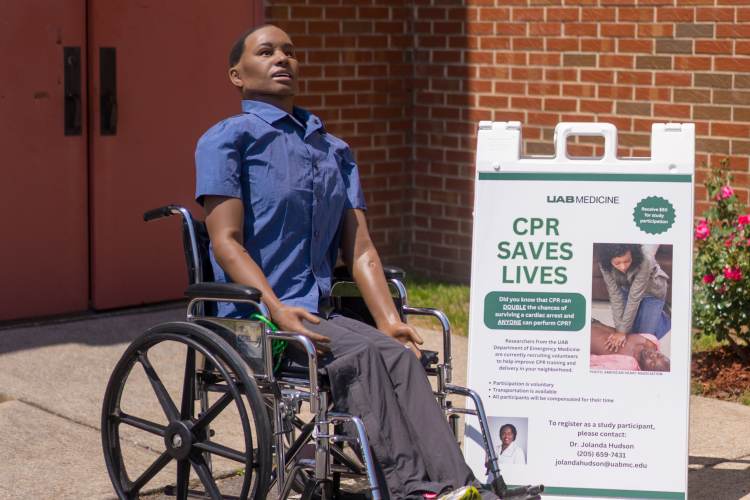Improving Bystander CPR in the Heart of the City

In a city where out-of-hospital cardiac arrest survival lags behind national averages, a new research initiative is taking bold steps to close the gap—starting with a phone call.
Backed by grant funding from the National Institutes of Health and the American Heart Association, emergency physician Dr. Ryan Coute is leading a pilot study aimed at improving the clarity and effectiveness of 911 dispatcher CPR instructions. With support from UAB Clinical Simulation, the project is helping determine how best to guide bystanders through life-saving action in the critical moments before first responders arrive.
“Our research has shown that Birmingham’s bystander CPR rates are about two and a half times below the national average,” Coute said. “Only about three out of every 100 patients who suffer a cardiac arrest outside the hospital survive. We’re working to change that.”
To do so, the team partnered with local churches to host immersive simulations. Participants entered a room to find a high-fidelity manikin in distress and were instructed to call 911. On the other end of the line, real Birmingham dispatchers walked them through Alabama’s standard CPR instructional protocol—while the sim team captured data on compression quality including depth, rate and duration.
“We’re now analyzing how effective that CPR was,” Coute said. “But even in these early stages, I’d say it was a massive success. Community members arrived excited, they took it seriously. One participant’s glasses fell off mid-compression, and instead of stopping to pick them up, they kept going. That’s exactly what we were hoping for—people treating the simulation like real life.”
In addition to tracking CPR performance, the team conducted focus groups with each participant to understand how the instructions landed in real time. Feedback from those sessions will help inform a future revision of Birmingham’s 911 CPR protocol.
The project’s next phase will bring together stakeholders—including community participants, Birmingham Fire and Rescue and regional 911 agencies—for a collaborative “think tank” to rewrite the dispatch script and test it again based on what we have learned from this study.
Coute credited UAB Clinical Simulation as a critical partner in both the technical and human elements of the project.
“They really went above and beyond to make sure this project was successful,” he said. “The equipment, the expertise, the flexibility—even running a Saturday session. You could tell they believed in the mission, and that meant a lot.”
To find out how simulation can work for you or your team, visit uabsimulation.org or email simulation@uabmc.edu.
UAB Medicine’s Clinical Simulation program offers opportunities for individuals and teams across UAB Medicine and beyond to practice before they deliver care. We encourage all who provide and support patient care to “Sim First.” Together, we can put our patients’ safety first.




0 Comments